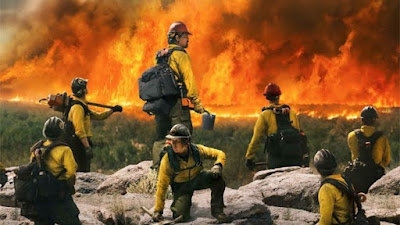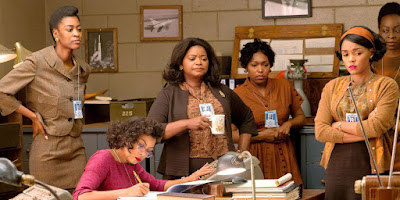We’ve really broken the back of the fictional artists this week! We’ve done all their bios, nearly all their artworks, and two press releases. Fingers crossed by next week it’ll all be done and we can start designing the leaflets! With the artworks, we decided to use ideas we’ve had in our ideas list but for whatever reason, time or money or both, we’ve been unable to complete them. It’s rewarding to be able to include them in a work of their own and it’ll be fun if they ever get made into works of their own right. In term of the physical information stand, we’ve cut all the pieces and even started putting parts of it together, after that we’ve only got the leaflets that we just mentioned, the film and the frontage left!
The heads for mascots are coming along pretty well too, just one more head to build and then we can start figuring out if it’s at all wearable…We’ve also rethought the mascots being just off duty and instead we’ve going to have some present for a photo opportunity at the front of the building. This will hopefully create a more effective difference between the mascots within the exhibition (off duty) and those on the outside (on duty).
We went to see a performance night at Tate, Sylvia Palacios Whitman, which was a little hit and miss. It was off to a bad start because their seating for over 200 people was 3 benches so we had to sit on the floor and the sight lines were also awful; two giant concrete pillars meant that a lot of our view was obscured. We then felt it had kind of missed the point of performance art – everything just happened in front of us as if it was narrative theatre and it felt inappropriate for the content. Imagine if Tate put on a retrospective and then put all the work in one room or one wall, it felt very unconsidered and under-curated. Everyone was also taking it so seriously and to us it felt much more funny than serious. A lot of our issues are to do with the situation as opposed to the work which is maybe not the best way the review art but it definitely impacted upon our experience. However, there were some redeeming factors in the work – there was a string based work were the performers were intertwining themselves with string and another one with giant green hands. These were both ruined by the sterile environment they were displayed in.
For the forth issue of the isthisit? book there was an exhibition at the new Arbyte gallery space on the London Islands. A really exciting an engaging exhibition and book all about the internet of things, AI, and dystopic futures. A great feature of the space is the uniform removable floor panels which mean that the TVs for the show are able to be sunk into the ground. Quite a novel method of showing the moving image works in the show, our favourite of which has to be Stine Deja’s video Foreigner, featuring an android singing “I wanna know what love is” to itself in a vanity mirror. Immersed in a clinical environment, the android appears as a new born learning to experience emotion through a widely distributed and culturally ubiquitous musical touchstone. The video satirises the ways in which machine learning recognises patterns and repeats them regardless of what those patterns are while being a world away from actually identifying or knowing ‘what love is’; a very clever idea and bizarre outcome.
In film world, we’ve had the amazing new Marvel film, Black Panther. A truly excellent film in all respects, first we don’t think we’ve ever seen such black centric film with this many characters before and it was so refreshing. The villain was one of those most fleshed out ones we’ve ever seen in a marvel film; usually just driven by mindless, incomprehensible world domination, this was a ‘baddy’ you could relate to and sympathise with. We really hope Marvel continue with this type of film as they really nailed it with this one.
A change of tone for Film Stars Don’t Die in Liverpool. The true story of the Hollywood actress Gloria Grahame finding romance and happiness with a younger man, but everything goes to shit when she is diagnosed with breast cancer. The film was so moving that it brought us to tears towards the end. Highly emotional and so tragic; the characters you feel opposed to during the beginning, are understood towards the end and the empathy flood gates just break wide open. A beautiful story of romance and untimely death.
Into science-fiction land, we saw the new Netflix film release everyone’s been talking about, Annihilation. Even though it began with some ham-handed writing at the beginning, the film totally won us over with its auditory and visual punch. Not to mention the philosophical readings which had us discussing it with others for lengthy periods of time. Our main reading was a Hegelian one based on his ideas about the dialectic; this is defined as having a thesis (e.g. white) and an antithesis (e.g. black) and then come to get and make a synthesis (e.g. grey) and then that’s the new thesis and the whole thing starts again. So here we have people and aliens and then we see the effect of the aliens on the people and vice versa. A very ambitious films which definitely won us over with some superb world building.
Only the Brave was next, the very moving story of the Granite Mountain Hotshots becoming one of the most elite firefighting teams in the country. Unfortunately, they’ve taken an amazing story and turned it into a very mediocre film; most of the characters are one dimensional even with the few who are given backstories. A classic case of bad storytelling undermining a compelling event.
Finally, we watched Hidden Figures which was superb from beginning to end. Seeing the black women who worked for NASA to get the spaceship into orbit was exciting to say the least. We’ve never been exposed to this story and it’s a real shame that these amazing women haven’t had their achievements more celebrated. Their boss was a very familiar case of someone who was set in their ways but when called out on it, realised that it was completely backwards. An example that springs to mind is the ‘coloured bathroom’ scene where he asks Taraji P. Henson’s character where she goes every day for 40 minutes and she explains to him that the only coloured bathrooms are over half a mile away. He then proceeds the remove the signs and tell everyone that there are “No more coloured restrooms. No more white restrooms. Just plain old toilets. Go wherever you damn well please. Preferably closer to your desk. Here at NASA, we all pee the same colour.”


































